Are you wondering what the best places to visit in Norway in winter are? Read on for my full list!
The Scandanavian country of Norway is known for its picturesque natural beauty, jaw-dropping fjords, glaciers extending as far as the eye can see and soaring mountains.
It’s true that in the winter months, Norway is cold and dark. But there’s also a vast range of winter activities and beautiful snow-dusted towns to enjoy.
From dog sledding through snow-capped mountains to witnessing the mesmerizing northern lights, Norway offers a winter wonderland of adventures for those who are willing to brave the cold.
So, if you’re looking for the best places to visit in Norway in winter, we’ve put together a full list of the country’s best towns where you can enjoy all of Norway’s best winter scenery and attractions!
Best places to visit in Norway in winter
Norway is a stunning country that is just as beautiful in the winter as it is in the summer. From the Northern Lights to the snow-covered fjords, there are plenty of places to visit in Norway during the winter months, from cities and towns in the frozen Arctic circle to the picturesque fjords further south.
Tromsø
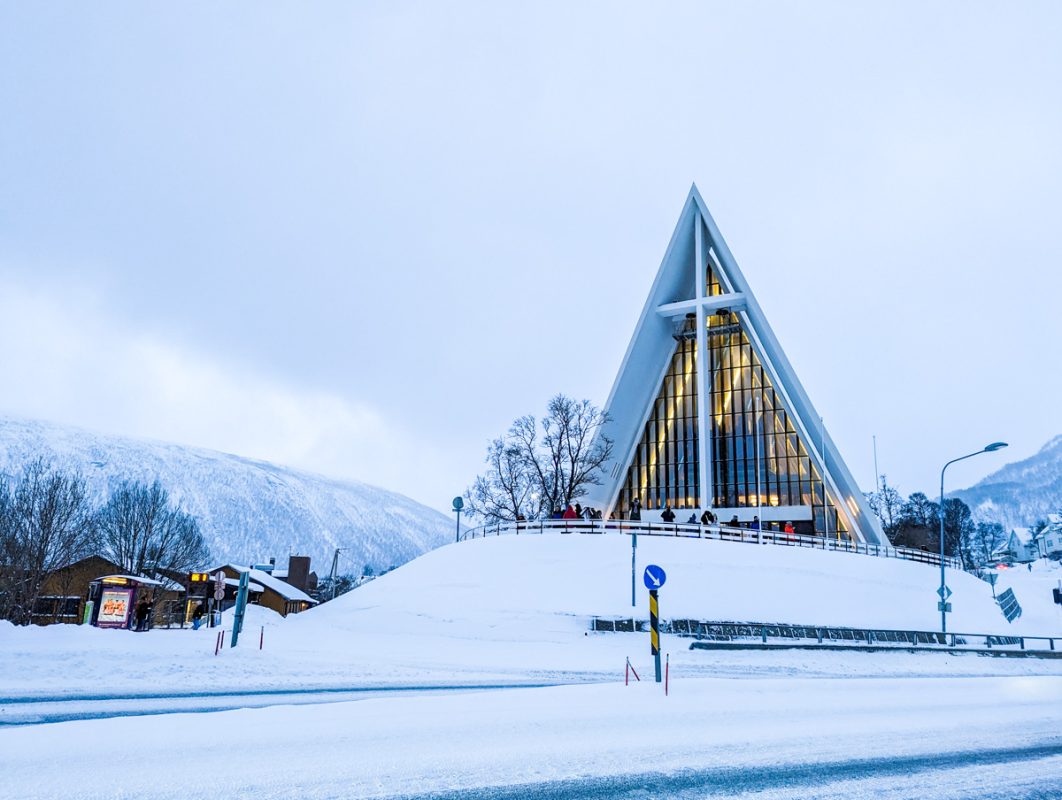
Tromsø, known as the “Gateway to the Arctic,” is the largest city in Northern Norway; and one of the most idyllic and atmospheric places to visit in the country for a winter city break.
It is the most popular winter destination in Norway, but I promise you it will live up to expectations!
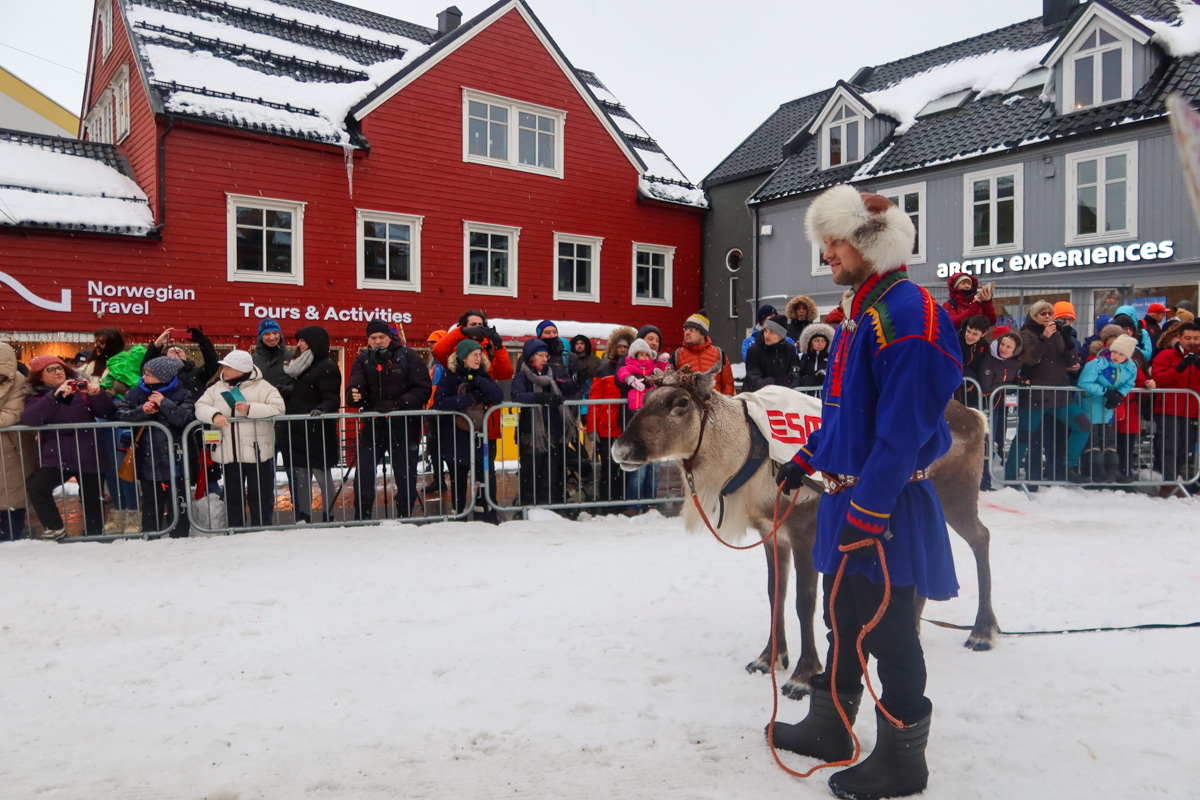
With its snowy landscapes and fjords, the city is a prime location to take guided tours to witness the aurora borealis during the dark days of November, December and January.
There’s a buzz in Tromsø that’s hard to explain; locals are welcome, tourists land with the excitement of being in the Arctic, and many end up staying and setting up lives there!
In the winter, enjoy snow-covered streets, classic Norwegian architecture, winter boat rides on the fjords and fascinating museums, all of which delve into the unique culture of Arctic Norway.
Of course, you’re in the Arctic, so there are plenty of snow-based winter activities just outside of Tromsø including dog sledding, reindeer sleigh rides, and snowmobiling.
It’s close to the Lofoten Alps, which is just one of the prime skiing destinations in the area.
Check out my full post about visiting Tromsø in winter by clicking here.
Bergen
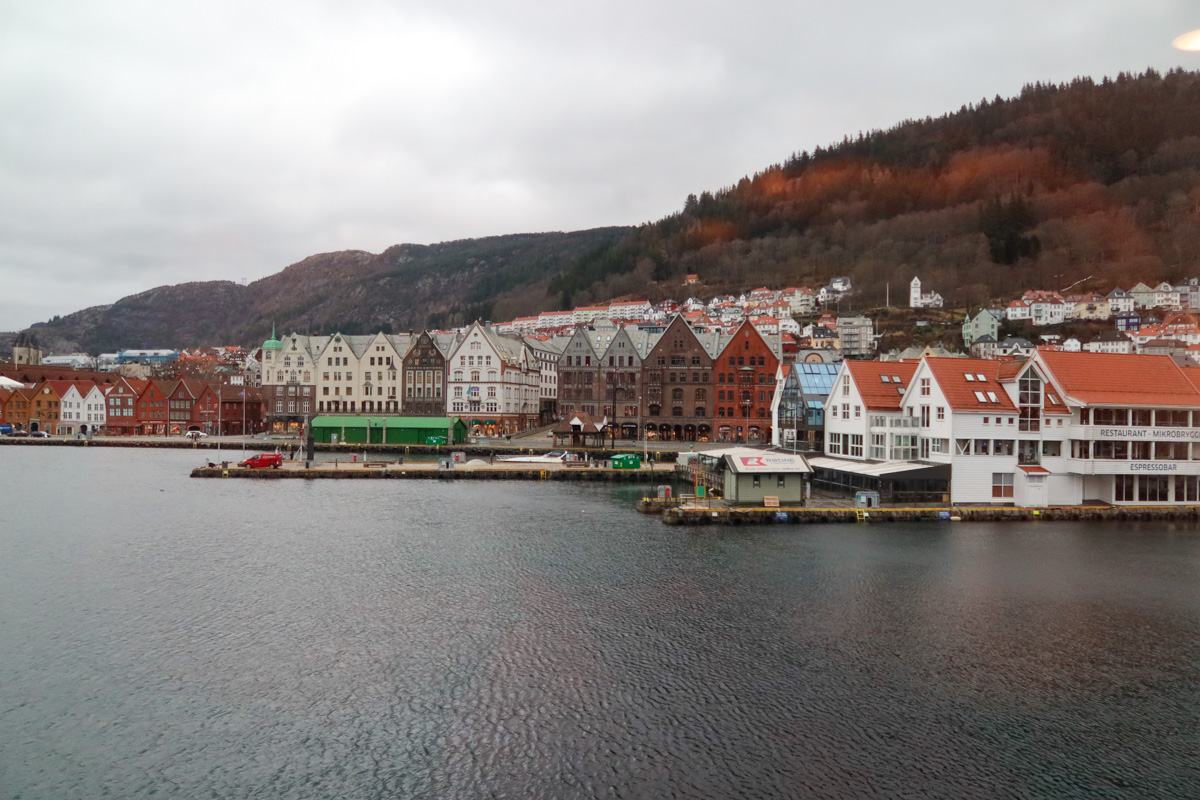
Bergen, Norway’s beautiful second-largest city, is surrounded by snow-capped mountains and fjords.
While Bergen may not be as cold as other parts of Norway, with winter temperatures often hovering above freezing during the winter months, it’s a beautiful city throughout the seasons.
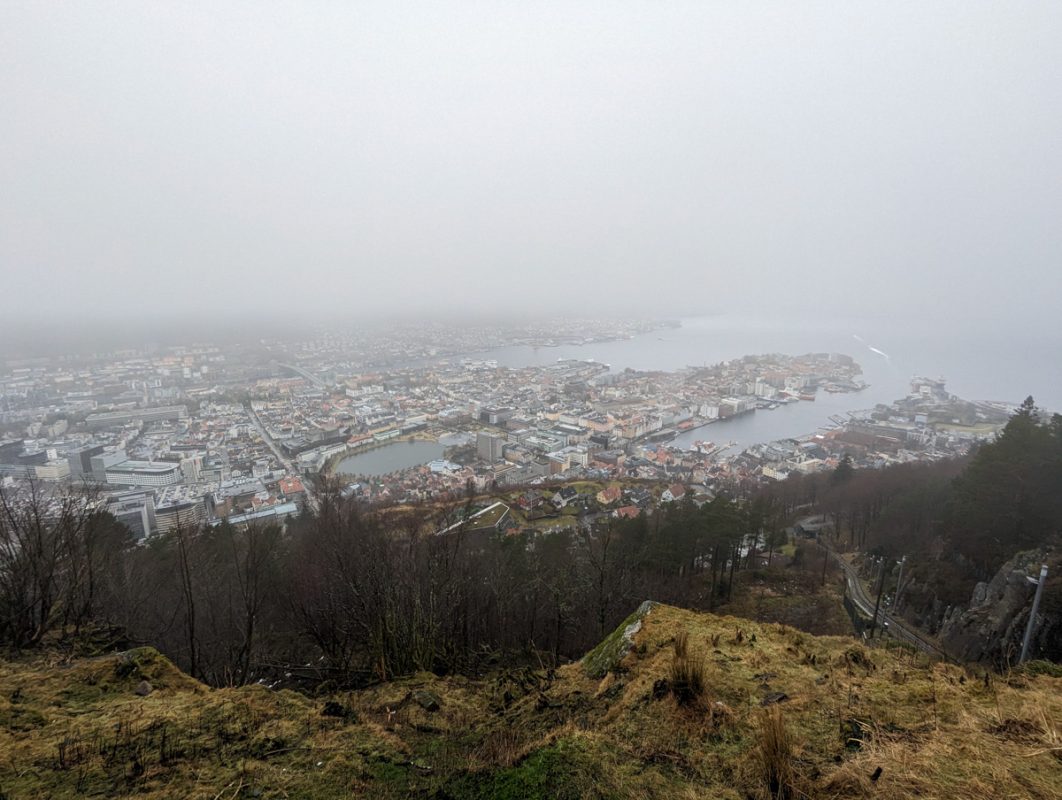
The weather can be a little cloudy and drizzly, but it’s still a fantastic place to visit during the colder months!
The city started life as a historic fishing village and is known for its colorful houses and vibrant seafood scene (it has UNESCO City of Gastronomy status), with plenty of museums including the Bryggen Museum and the Bergen Maritime Museum to learn about the city’s extensive history.
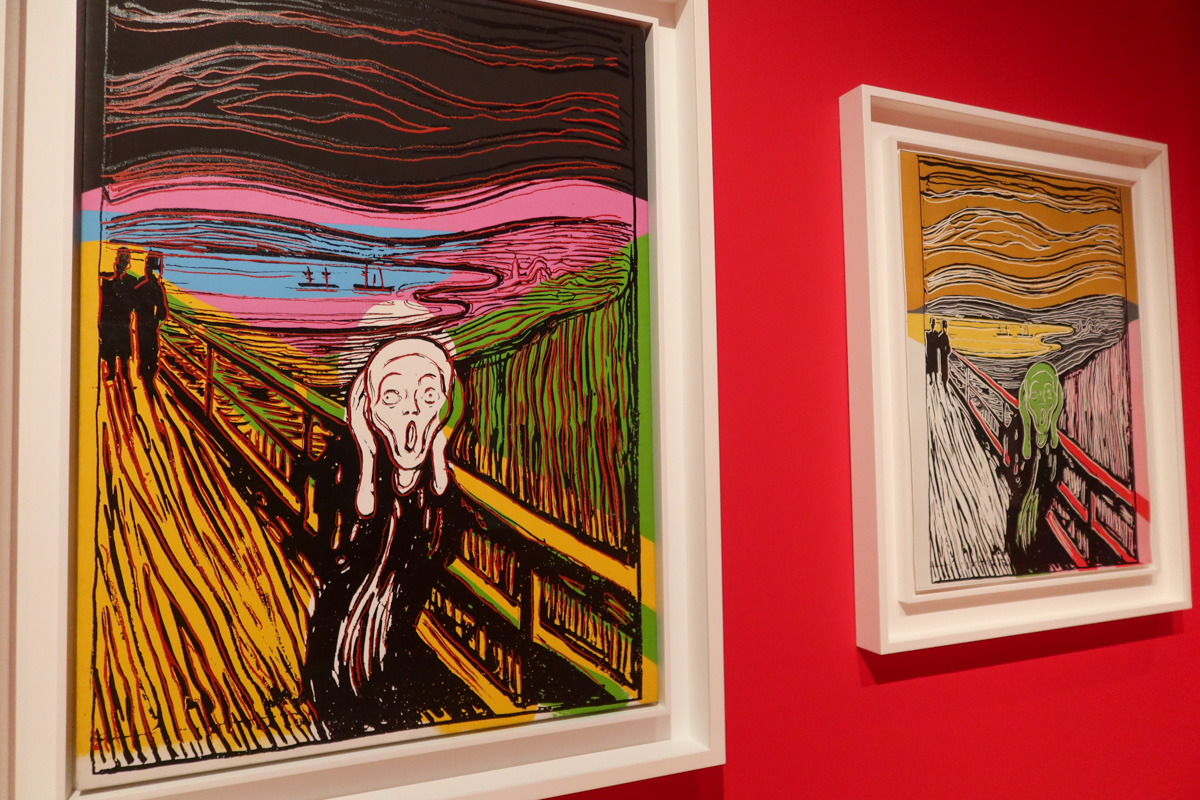
One of the best things to do is to take a funicular up to the top of Mount Fløyen for a panoramic view of the city. Or, enjoy the cosy atmosphere of Bergen’s cafes by snuggling up with a hot beverage and fresh Norwegian pastry!
Thanks to Bergen’s UNESCO status, there are also a huge variety of restaurants in town – and there’s even a seafood festival in Bergen in February.
When I was in the city, I tried Fish Me!, Allumen Bistro and Skyskrapen, which is on the top of Mount Ulriken (you’ll need to take a cable car up here).

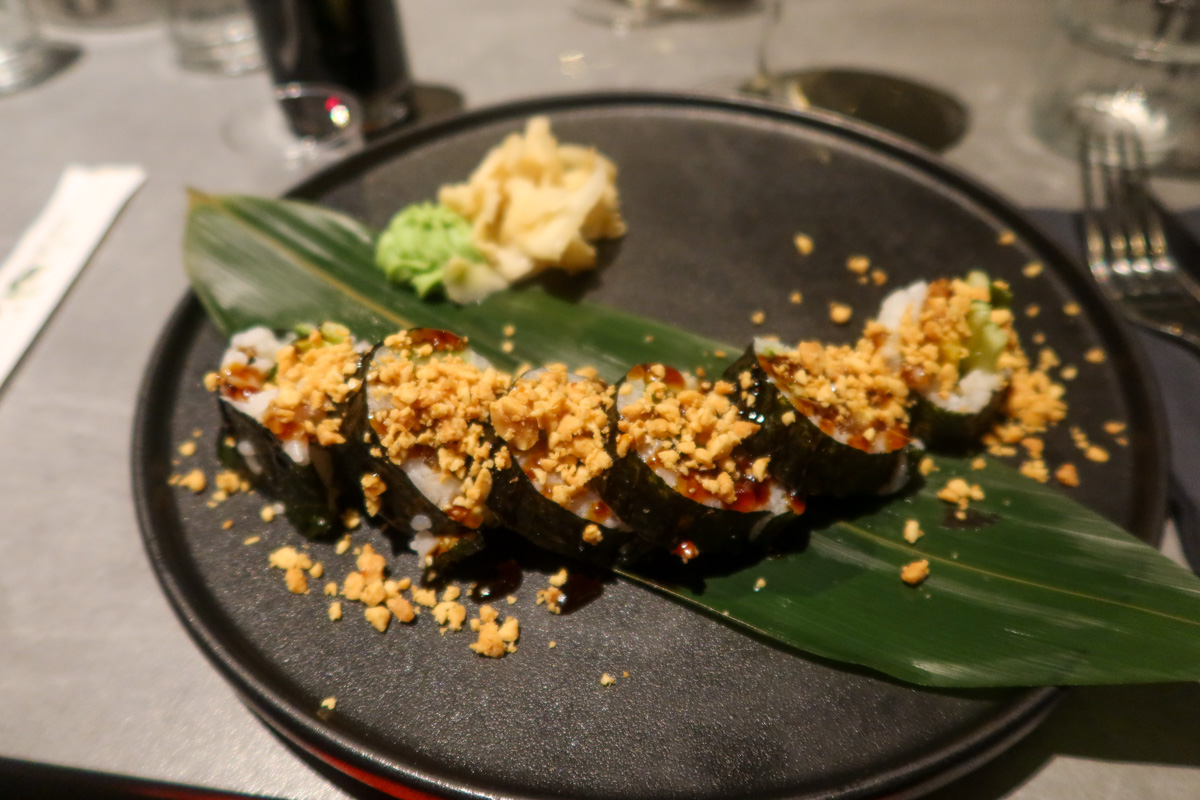


Plus, in the winter, the mountains nearby and the winter resort town of Voss are ideal for skiing and snowboarding. You can take a day trip to Voss or other destinations like Flam from Bergen.
Check out my full guide to visiting Bergen in winter by clicking here.
Fjaerland

A small village in western Norway, Fjaerland is surrounded by majestic mountains and deep fjords.
It’s not as visited as other destinations on this list, but it’s one of the best fjord destinations in Norway in the winter, and there are plenty of reasons why you must add it to your itinerary!
Visit during the winter to wow at the snow-covered landscape and partake in winter sports, with snow-covered mountains providing a stunning backdrop to the village.
The quietness of the village creates a peaceful atmosphere, perfect for those looking for a tranquil getaway with refreshing and invigorating chilly air.
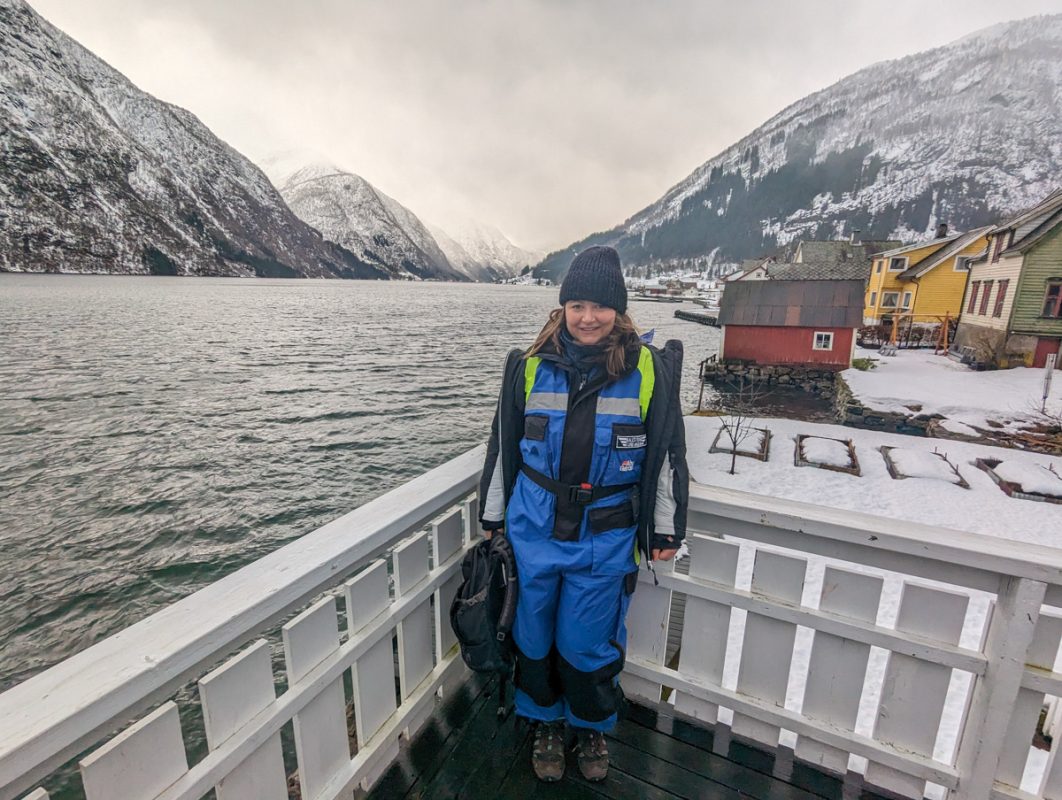
Take a boat out on the fjord, go kayaking with Fjaerland guiding or use one of their saunas – they have a dreamy floating sauna from which you can take a dip into the chilly fjord waters or on-land saunas if the waters are turbulent.
One of the main attractions near Fjaerland during the winter months is the Jostedalsbreen glacier, the largest in continental Europe.
You can go cross-country skiing and snowshoeing on the glacier, taking in its dramatic crevasses and the awe-inspiring ice sheets. Once you’ve taken in some of the best winter scenery of Norway, visit the Glacier Museum where you’ll learn all about this dynamic scenery and the risks that it faces.

The crisp winter air in Fjaerland will leave you hungry for traditional Norwegian cuisine, including hot soups, stews, and locally caught fish, straight from the fjord.
I particularly loved the cuisine at the Fjaerland Fjordstove Hotel; the chef is extraordinarily talented and cooked a delectable mushroom pasta along with a light and creamy raspberry cake.
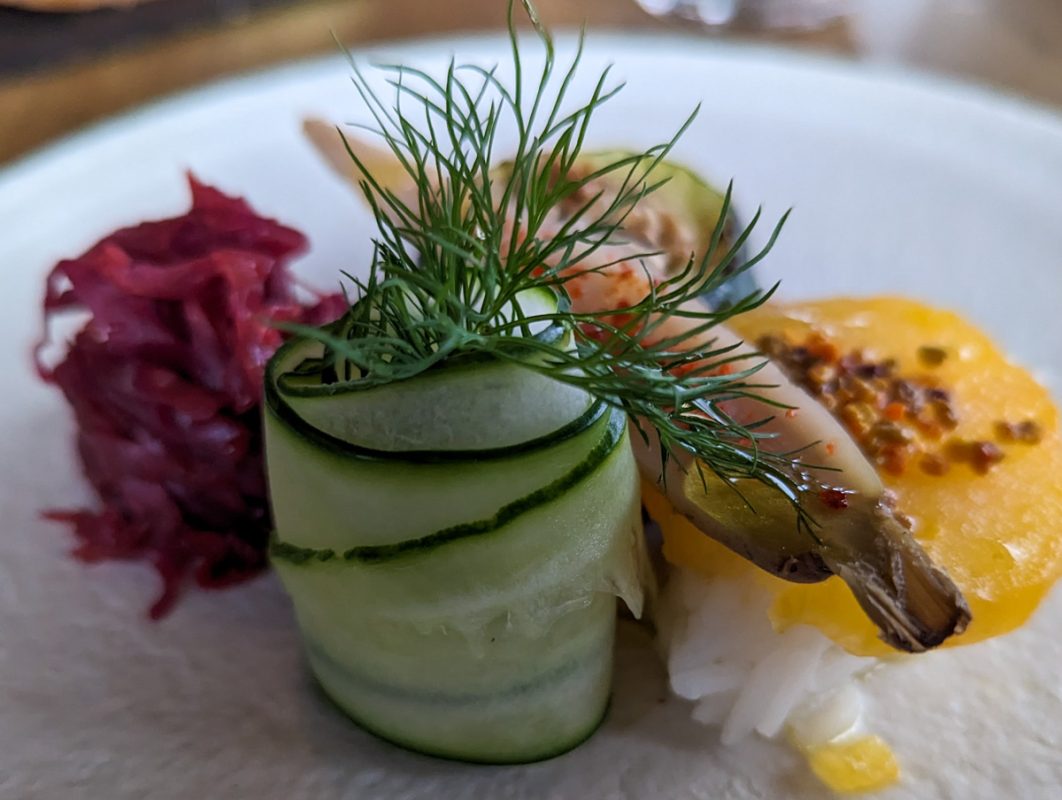
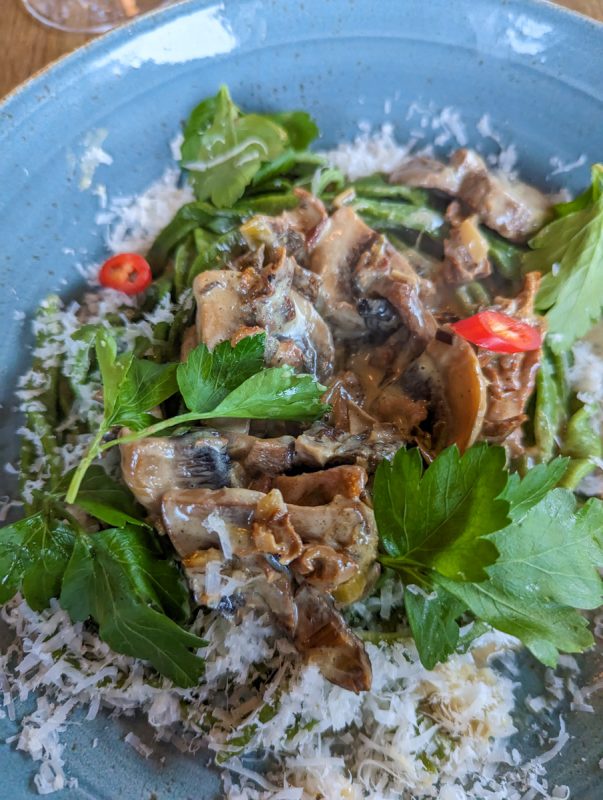
Lillehammer
Lillehammer, located between towering mountains in the Gudbrandsdalen Valley of Central Norway, is a popular winter destination known for its ski resorts, outdoor activities, and cultural events.
One of the main attractions of Lillehammer in the winter months is skiing; it was actually the location for the Winter Olympics in 1994.
The city is home to two major ski resorts, Hafjell and Kvitfjell, both offering a range of slopes for all levels of skiers and snowboarders, along with snowshoeing and cross-country skiing.
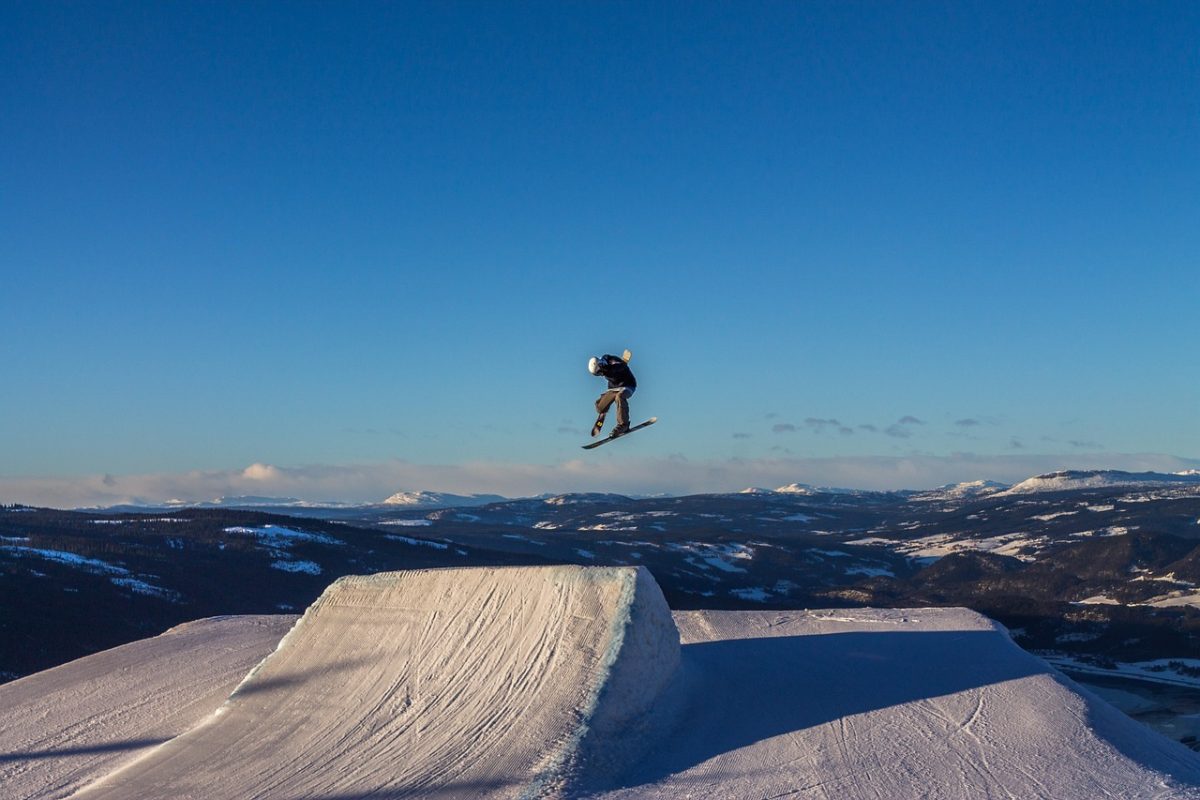
Lillehammer also hosts several winter festivals, including the Birkebeinerrennet, a 54km cross-country ski race that starts in Rena and terminates in the town.
Other than the ski resorts, there’s plenty to see in Lillehammer town center too.
Maihaugen Open-Air Museum showcases traditional Norwegian architecture and culture, and you can learn about the history of the world’s biggest sports games tournament by visiting the Norwegian Olympic Museum.
Svalbard
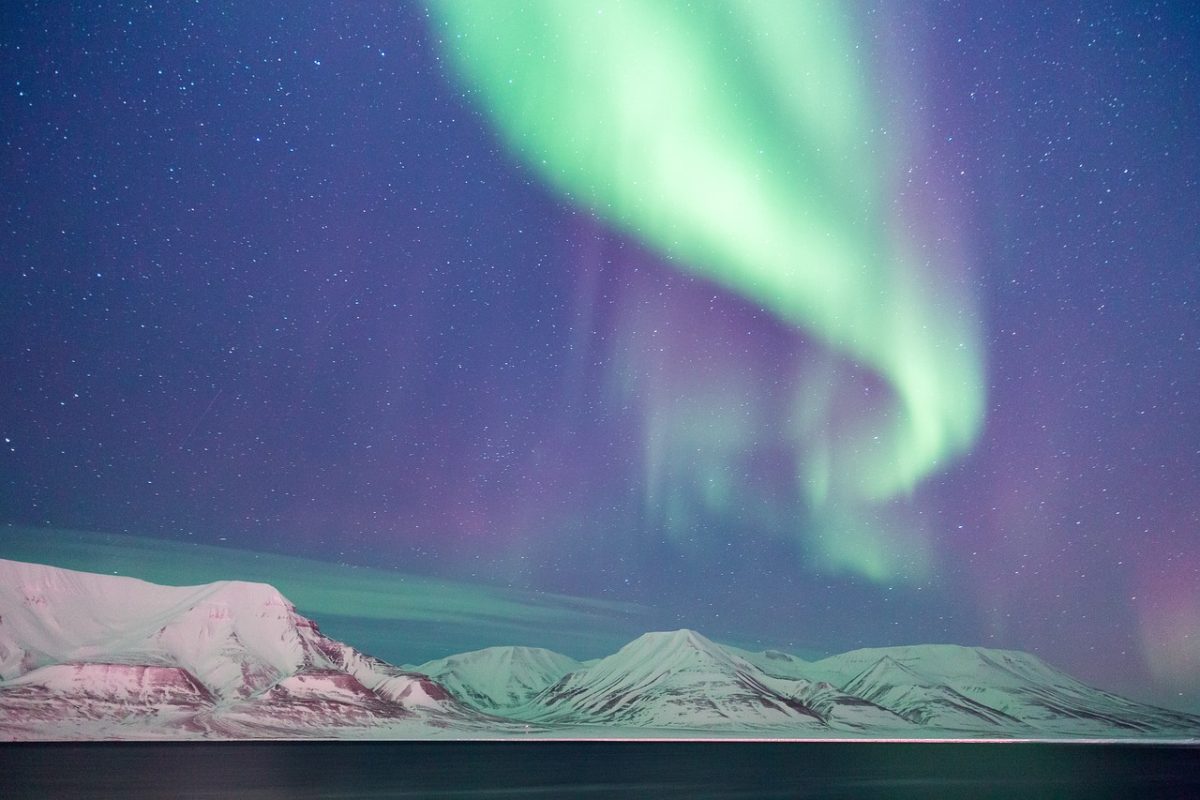
Svalbard is a Norwegian archipelago located in the Arctic Ocean, midway between Norway and the North Pole.
While it’s very much a stand-alone Arctic destination, it’s part of Norway (and you need to fly through the country to visit).
In the winter months, Svalbard is covered in snow and shrouded by darkness; but that doesn’t mean that it isn’t worth visiting!
On the island, you can enjoy frozen tundras, glaciers, and icy fjords.
The archipelago sits where cold, dry air from the Arctic meets warmer, wetter air from the south, which means that the weather here isn’t usually as cold as you’d expect (the weather today, at the end of February, is -6°C/ 21.2°F) although it can drop to -30°C/ -22°F on the coldest winter days.
Due to Svalbard’s extreme north location, it witnesses polar nights for two and a half months of the winter; while this does mean complete darkness, it’s a fascinating chance to see how humans can survive in extreme conditions AND gives you more of a chance to see the northern lights!
Despite the extreme weather conditions, Svalbard offers a host of winter activities for visitors to enjoy, including dog-sledding, snowmobiling, ice-caving, snowshoeing and skiing. However, visitors aren’t allowed to leave the street lights of Longyearbyen independently, due to the amount of dangerous polar bears on the island.
Along with polar bears, Svalbard is home to Arctic foxes, walruses and reindeer, along with whales in the surrounding sea.
In Longyearbyen, explore museums like the North Pole Expedition Museum and the Svalbard Museum, check out the northernmost church in the world and chat with locals about what it’s really like to live in such a remote place, learning fun facts like nobody is allowed to give birth on the islands (pregnant women have to fly to the mainland before they have their babies!).
Lofoten Islands
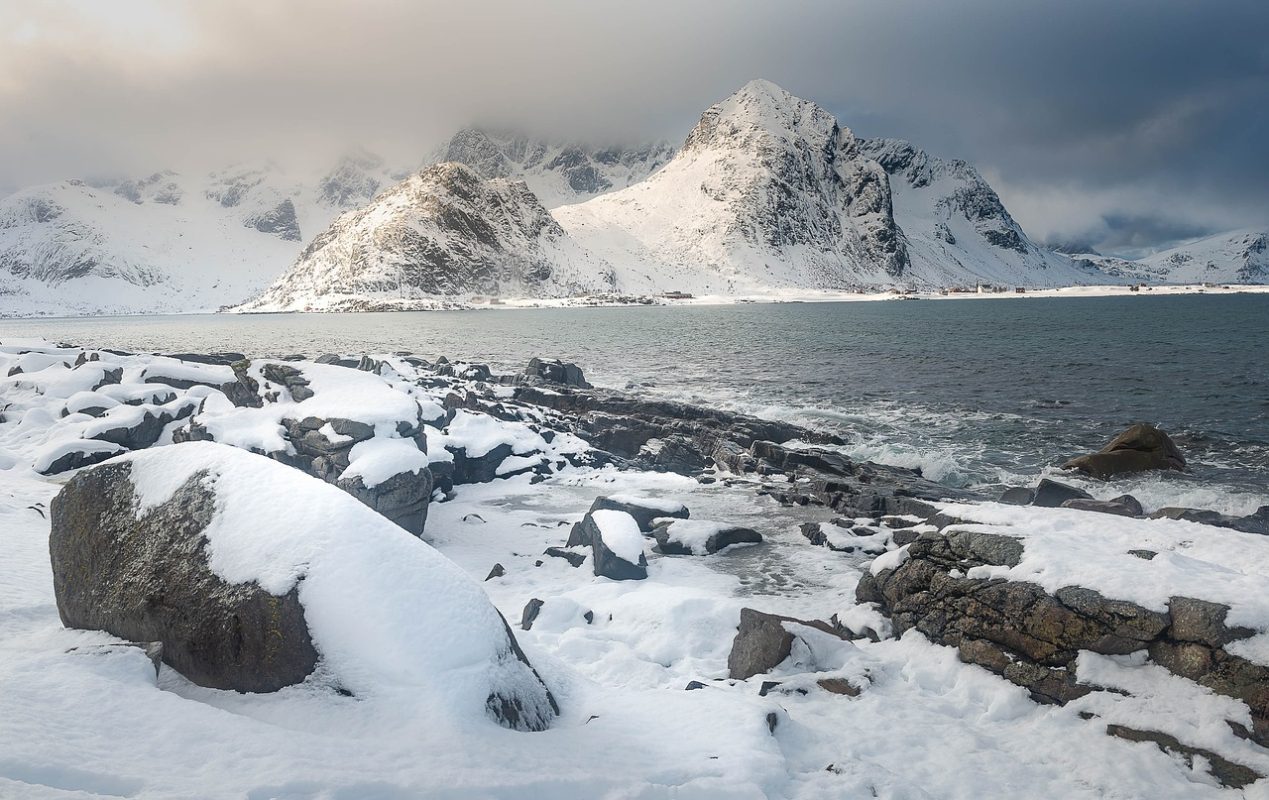
One of Norway’s most popular destinations (for good reason!), the Lofoten Islands are an Arctic winter paradise.
Known for their dramatic landscapes, including towering mountains, deep fjords, frozen lakes and pristine beaches, the Lofoten Islands boasts opportunities for winter activities like skiing, snowboarding, and snowshoeing.
The weather patterns around the islands can be a little erratic, and it’s best to do tours with people who know the roads well; this will also give you the best chances of seeing the northern lights.
Other activities include visiting local fishing villages, sampling traditional Norwegian cuisine, and taking a cruise through the stunning fjords.
Alta
Sitting on the coastline at the far north of Europe, in the county of Finnmark which is “where east meets west”, Alta is a popular winter destination for visitors looking to experience Arctic wilderness and traditional Sami culture.
Alta is transformed into a winter wonderland from November to April, and is ideally located within the auroral zone, making it the perfect location for witnessing the northern lights, which are visible on clear winter nights.
Visitors can take part in guided northern lights tours to find the best viewing spots; it’s also possible to partake in a traditional reindeer sledding trip led by local Sami people.
The town boasts SarvesAlta ski resort (around 20 kms away), which has a 5.5 km of slopes for all skill levels.
Visitors can also experience the world-famous Sorrisniva Igloo Hotel (the world’s northernmost igloo hotel!) which is entirely made of ice and snow and is rebuilt each year.
Home to a rich Sami culture, visitors visit Atla to learn about the indigenous people’s traditions and way of life.
Begin this exploration at Atla Museum, which showcases the culture, history, and art of the Sami people. There are also Sami tours where you can have a more immersive experience of the native people’s way of life.
Røros

Back down in central Norway, Røros is known for its well-preserved wooden architecture, mining heritage, and stunning winter landscape.
In the cooler months, Røros is transformed into a winter wonderland, with snow-covered streets, picturesque buildings, and a cozy atmosphere.
The town is surrounded by the Rørosvidda plateau, which offers excellent cross-country skiing opportunities, with over 150 kilometers of prepared ski tracks, and several ski resorts in the surrounding areas.
The Rørosvidda plateau is the setting of the famous Femundsløpet sled dog race, which takes place in February and attracts participants from all over the world.
Visitors to Røros in winter can enjoy guided tours of the town’s mining heritage – it’s been recognized as a UNESCO World Heritage site.
As you explore, take in the town’s historic wooden buildings, dating back to the 17th century, which are particularly beautiful in the winter. During this season snow covers the roofs – and in December, Christmas lights decorate the streets.
Røros also boasts a range of cozy cafes and restaurants, where visitors can warm up with traditional Norwegian dishes such as “rømmegrøt” (sour cream porridge), “lapskaus” (stew), and “kamkaka” (potato cake).
Flåm

A picturesque village located in the heart of the Norwegian fjords, Flåm is known for its stunning scenery and outdoor activities.
It’s only a small place, and in the summer months, the village can be crowded. But in the winter, Flåm is peaceful and serene, while still offering plenty of opportunities to get out and enjoy some of Norway’s signature nature!
One of the best things I did in Flåm in winter was a snowshoeing tour, which traipsed around nearby mountains and took in some stunning views of the fjords.
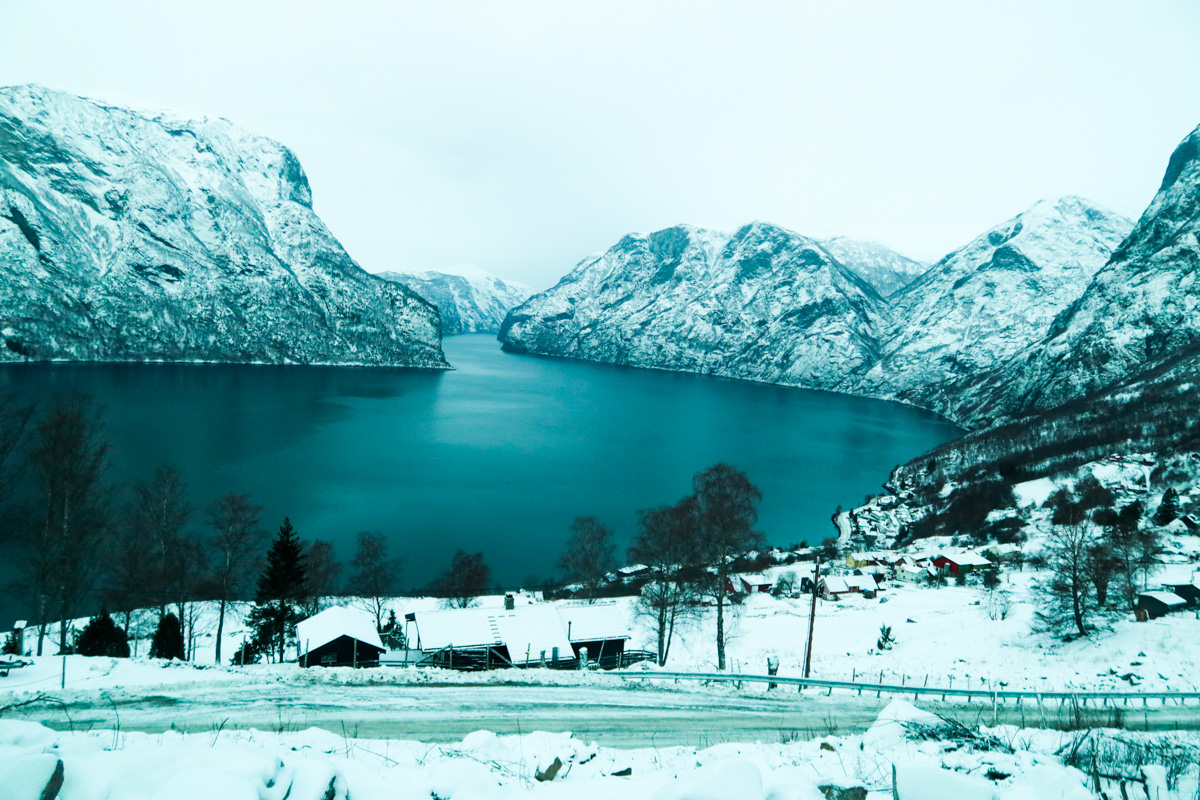
You can even take to the fjords on a boat (wear many, many layers and add on all the extra layers the tour operator gives you!); I’d recommend the covered solar-powered boats in the winter months, but RIB boat tours are also available.
One of the main attractions of Flåm is the Flåm Railway, one of the most beautiful train routes in the world.
It’s open in the winter, and by embarking on it you’ll pass through snow-covered mountains and witness stunning views of the winter landscape.
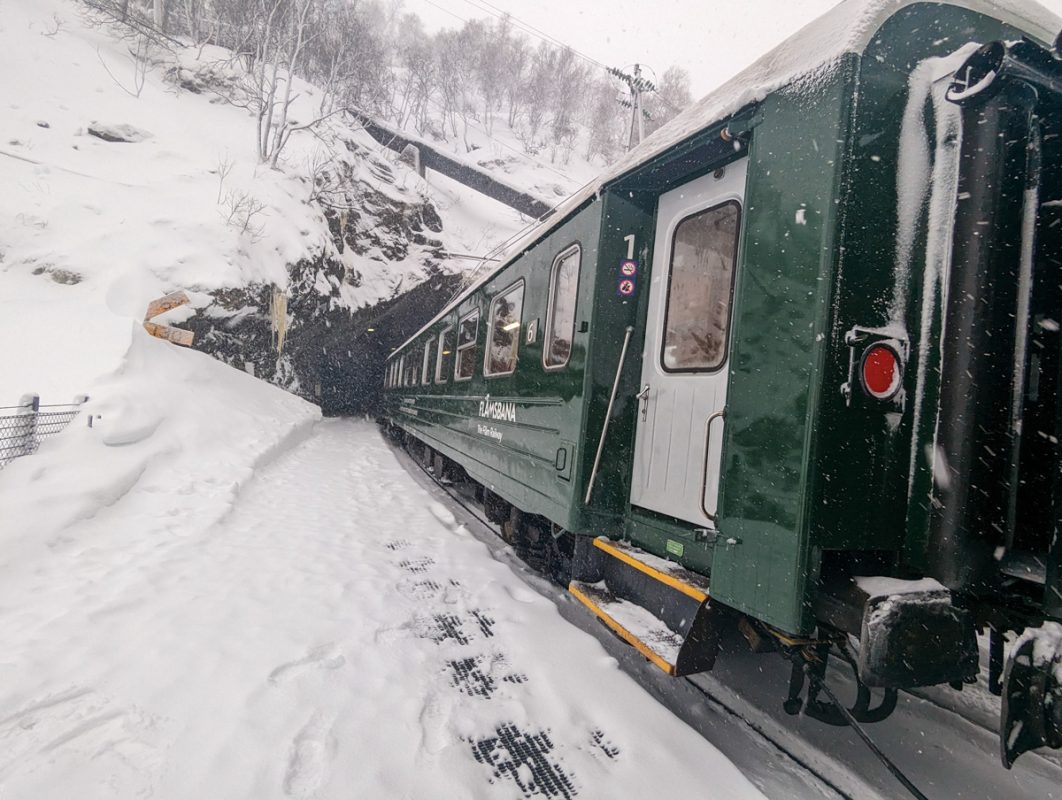
If you’re looking for somewhere to stay in Flåm, I recommend the historic Frentheim Hotel, a large hotel that had its origins as a historical manor house when tourists first came to the village. There’s an excellent restaurant and bar on-site.
Geirangerfjord
What’s the best fjord in Norway? It’s a timeless question that has had many locals and tourists debating for decades!
One that comes up often is Geirangerfjord. One of the most iconic destinations in Norway, renowned for its dramatic scenery, Geirangerfjord’s beauty transcends seasons.
In winter, the fjord takes on a completely different character, with snow-covered peaks, frozen waterfalls, and a serene atmosphere.
The fjord is less crowded in winter, making it a peaceful and tranquil experience for visitors.
The crisp, cold air and the white snowy landscape create a magical atmosphere, with the winter sun reflecting off the water and illuminating the fjord.
Enjoy a variety of winter activities in Geirangerfjord, such as snowshoeing, skiing, and ice climbing, where you can take in some of the most epic views in Norway.
Geirangerfjord is also famous for its waterfalls, and in winter, many of these freeze over, creating spectacular ice formations.
Oslo

Oslo, the capital city of Norway, is a charming winter destination that offers a range of winter activities and festive events, making it a popular spot for both locals and tourists.
The streets are usually covered in snow in the winter months, and over the festive season, you’ll see trees adorned with lights and Christmas markets popping up throughout the city.
The most famous of these markets is Christmas in Winterland, the Christmas market in the heart of the city. Here, you’ll enjoy traditional Norwegian food, drink, and crafts, as well as ice skating in the open-air rink.
If the weather isn’t great while you’re there, Oslo has a range of museums and galleries, including the Munch Museum, which houses the largest collection of Edvard Munch’s works in the world, and the National Gallery, which has an impressive collection of Norwegian art.
Outside of the capital, enjoy a range of winter activities; you can even ski in the city limits at Skimore Oslo, with 14 slopes and six lifts.
Trondheim
Trondheim in central Norway is known for its rich history and vibrant cultural scene, with plenty of activities and events to enjoy in the winter months.
One of the highlights of visiting Trondheim in the winter is the city’s Christmas market.
Located in the heart of the city, the market offers a festive atmosphere with traditional Norwegian food, handcrafted gifts, and live music.
The city’s historic Nidaros Cathedral, dating back to the 11th century, is also a must-visit during the winter months. Inside, you can take a look at The Crown Regalia and it is beautifully illuminated at night.
The nearby Trondheim Fjord, which is Norway’s third-longest, also offers the opportunity for winter activities such as cross-country skiing and ice fishing.
Bymarka, a nearby forest and nature reserve, is a popular destination for skiing and snowshoeing, with over 80 kilometers of ski trails to explore.
For indoor activities, visitors can explore Trondheim’s many museums, such as the Norwegian University of Science and Technology Museum or the Trondheim Art Museum. The city also has a thriving music scene, with live performances and concerts held throughout the winter.
Stavanger
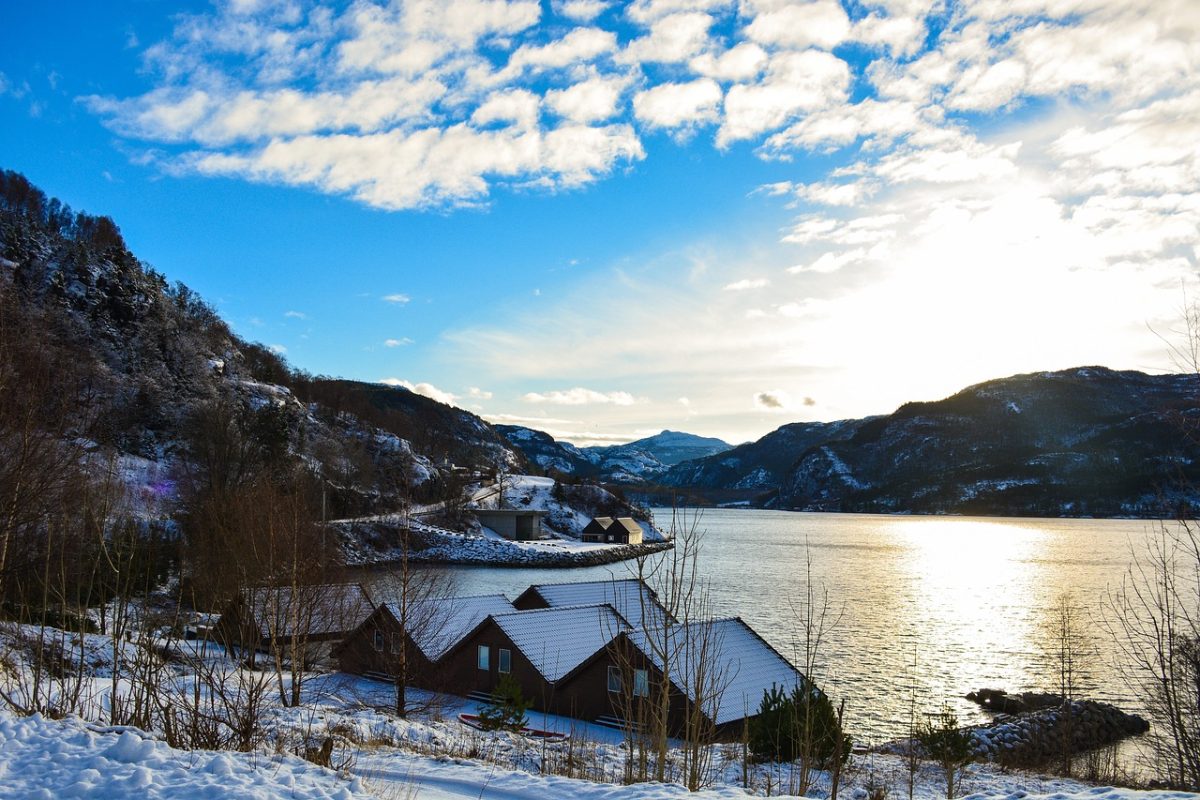
Stavanger, located on the southwest coast of Norway, is a charming coastal city that offers a range of winter activities and experiences. Enjoy the beautiful wooden colorful buildings and the cobblestone streets spanning the city.
One of the main winter attractions in Stavanger is the Christmas street market, located in the historic Old Town, which provides an authentically Norwegian experience!
In addition to the Christmas market, Stavanger is an excellent base for outdoor activities in the surrounding region. It snows in some of the surroundings of Stavenger, but the city itself usually has temperatures of up to 7°C (44.6°F) even on winter days.
Outside of Stavanger, you can visit the famous Pulpit Rock, which is a popular hiking destination year-round. You can also take in views of the epic Lysefjord, which is one of the most famous fjords in Norway.
Enjoy the many museums and galleries in Stavanger, including the Stavanger Art Museum, the Norwegian Canning Museum and the Norwegian Petroleum Museum.
Kristiansand
Sitting right at the bottom of the country, Kristiansand is generally a little warmer than other Norwegian cities in the Arctic region!
It’s the fifth-largest city in the country, is home to beautiful coastal views and has a charming historic center.
While the preferred time to visit Kristiansand is generally the winter, it offers a variety of indoor activities, including the Kristiansand Museum and the Kristiansand Art Museum.
Visitors can also explore the city’s many shops and cafes and explore the historic Old Town, which is home to traditional Norwegian architecture and charming streets.
Due to its milder weather, you can enjoy hikes along the beach (snow-free!) and head inland to ski resorts.
Narvik
A small city located in Norway’s Arctic region, Narvik is renowned for its breathtaking natural beauty and adventurous activities.
Located on the shores of Ofotfjorden and surrounded by mountains like Rombakstøtta, Narvik offers a variety of chances to enjoy Northern Norway’s dramatic scenery.
In the winter months, Narvik is a popular destination for skiing and other winter sports.
The nearby ski resorts, including Narvikfjellet, offer a range of slopes for all levels of skiers and snowboarders. You’ll have a chance to enjoy other winter activities here, such as snowshoeing, dog sledding, and northern lights tours.
If you’re interested in history, Narvik played a significant role in World War II.
It has several historic sites and museums dedicated to this period, including the Narvik War Museum which is located in the city center.
The northern lights are a major attraction in Narvik in the winter months; they’re one of the best places in Norway to spot them.
Norway winter FAQs
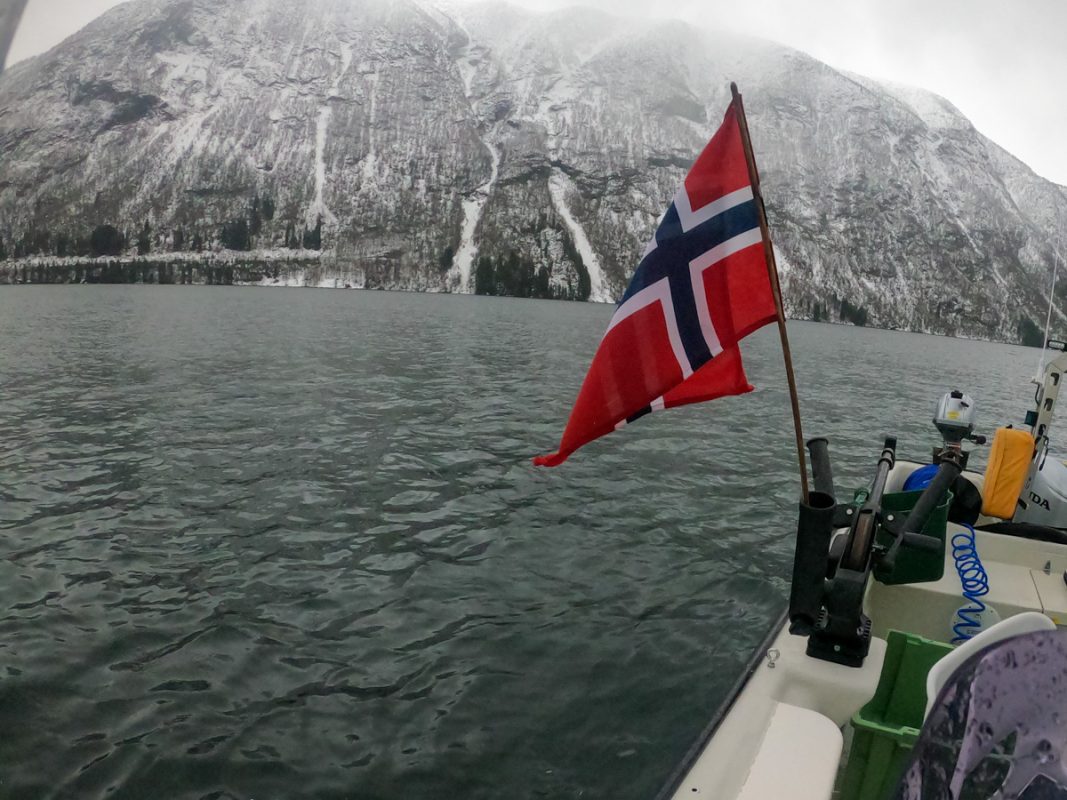
When is winter in Norway?
The winter season in Norway typically lasts from November to March, with December and January being the coldest months. The best time to visit Norway in winter depends on your interests, but many travelers visit in December to experience the festive Christmas atmosphere.
What are some of the best places to see the Northern Lights in Norway?
Northern Norway is one of the best places to see the Northern Lights in Norway. Tromsø, Svalbard, Alta, and the Lofoten Islands are all great locations to witness the natural phenomenon. Away from the light pollution of the cities, visitors have the best chance of seeing the Aurora Borealis.
What are some popular winter activities in Norway?
Norway is a winter wonderland with plenty of outdoor activities to enjoy. Popular winter activities in Norway include skiing, snowboarding, cross-country skiing, dog sledding, snowshoeing, ice fishing, and more. The Northern Lights are also a popular winter attraction that can be seen in many parts of Norway.

What are some of the best places to ski in Norway in winter?
Norway is home to some of the best ski resorts in the world, with a range of options for all levels of skiers and snowboarders. Some of the top ski resorts in Norway include Hemsedal, Trysil, Geilo, and Beitostølen, each offering stunning mountain scenery, great snow conditions, and a variety of winter activities.
Are the roads in Norway safe to drive during winter?
Norwegian roads can be challenging to drive during cold winters, particularly in more remote areas; and I wouldn’t really recommend self-driving while you’re here. It’s important to have the proper equipment, such as snow tires and chains, and to check weather and road conditions before setting out on a road trip.
Are accommodations and restaurants open during the winter season in Norway?
Yes, many accommodations and restaurants in Norway are open during the winter season, particularly in popular tourist areas. However, it’s a good idea to check availability and make reservations in advance. In more remote areas, some establishments may have limited hours or be closed altogether during the winter months.
How to get around Norway in winter
Getting around Norway in winter can be challenging due to snow and ice on the roads. Driving is possible but requires caution and the right equipment. Public transportation, including buses and trains, is a good option for getting around major cities and between towns. There are also a range of flights to cities all over the country.
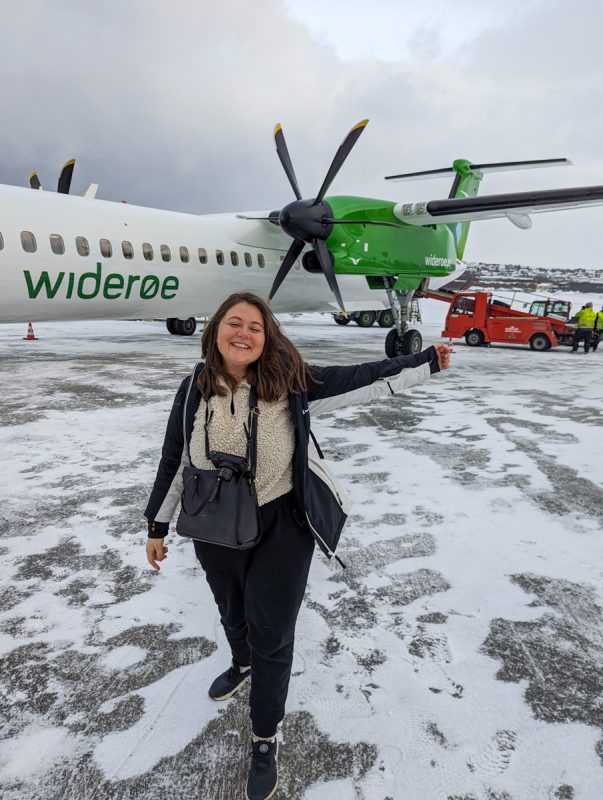
What are some of the best things to do in Norway in winter?
If you’re in Norway in the winter months, get ready to enjoy the following activities!
- whale watching tours
- exploring colourful settlements and taking in charming city vibes
- learning about care of reindeer with the Sami population in Arctic Norway
- seeing the Arctic city of Tromso at its most authentic
- scanning the winter night sky for the northern lights
- enjoying ice sculptures in some of the best ice hotels
- enjoying skiing, snowboarding, snowshoeing and other winter adventures in the snow
Are you ready to spend winter in Norway?
Norway’s certainly not a winter sun destination, but it has breathtaking natural scenery, unique outdoor activities, and cozy cultural experiences.
Whether you want to see the northern lights, explore snow-covered fjords on classic boat cruises, or ski across stunning mountain landscapes, Norway has something to offer for every winter traveler.
From charming historic fishing towns with rich cultural heritage to finding solar activity in the remote arctic wilderness, Norway is a country that should be on every winter traveler’s bucket list.
So pack your winter gear and get ready to experience the magic of Norway in the winter!

